Literature
| Literature | ||||||
|---|---|---|---|---|---|---|
 | ||||||
| Oral literature | ||||||
| Major written forms | ||||||
|
||||||
| Prose genres | ||||||
|
||||||
| Poetry genres | ||||||
|
||||||
| Dramatic genres | ||||||
| History | ||||||
| Lists and outlines | ||||||
| Theory and criticism | ||||||
|
| ||||||
Literature is any collection of
Literature, as an art form, can also include works in various
Developments in print technology have allowed an ever-growing distribution and proliferation of written works, which now include electronic literature.
Definitions
Definitions of literature have varied over time.
A
History
Oral literature
The use of the term "literature" here poses some issue due to its origins in the Latin littera, "letter", essentially writing. Alternatives such as "oral forms" and "oral genres" have been suggested but the word literature is widely used.[5]
Australian Aboriginal culture has thrived on oral traditions and oral histories passed down through tens of thousands of years. In a study published in February 2020, new evidence showed that both
Oral literature is an ancient human tradition found in "all corners of the world".[17] Modern archaeology has been unveiling evidence of the human efforts to preserve and transmit arts and knowledge that depended completely or partially on an oral tradition, across various cultures:
The Judeo-Christian Bible reveals its oral traditional roots; medieval European manuscripts are penned by performing scribes; geometric vases from archaic Greece mirror Homer's oral style. (...) Indeed, if these final decades of the millennium have taught us anything, it must be that oral tradition never was the other we accused it of being; it never was the primitive, preliminary technology of communication we thought it to be. Rather, if the whole truth is told, oral tradition stands out as the single most dominant communicative technology of our species as both a historical fact and, in many areas still, a contemporary reality.[17]
The earliest poetry is believed to have been recited or sung, employed as a way of remembering history, genealogy, and law.[18]
In Asia, the transmission of folklore, mythologies as well as scriptures in ancient India, in different Indian religions, was by oral tradition, preserved with precision with the help of elaborate mnemonic techniques.[19]
The early Buddhist texts are also generally believed to be of oral tradition, with the first by comparing inconsistencies in the transmitted versions of literature from various oral societies such as the Greek, Serbia and other cultures, then noting that the Vedic literature is too consistent and vast to have been composed and transmitted orally across generations, without being written down.[20] According to Goody, the Vedic texts likely involved both a written and oral tradition, calling it a "parallel products of a literate society".[21]
All ancient Greek literature was to some degree oral in nature, and the earliest literature was completely so.[22] Homer's epic poetry, states Michael Gagarin, was largely composed, performed and transmitted orally.[23] As folklores and legends were performed in front of distant audiences, the singers would substitute the names in the stories with local characters or rulers to give the stories a local flavor and thus connect with the audience, but making the historicity embedded in the oral tradition as unreliable.[24] The lack of surviving texts about the Greek and Roman religious traditions have led scholars to presume that these were ritualistic and transmitted as oral traditions, but some scholars disagree that the complex rituals in the ancient Greek and Roman civilizations were an exclusive product of an oral tradition.[25]
Writing systems are not known to have existed among
The enduring significance of oral traditions is underscored in a systemic literature review on indigenous languages in South Africa, within the framework of contemporary
Oratory
Oratory or the art of public speaking was considered a literary art for a significant period of time.[6] From Ancient Greece to the late 19th century, rhetoric played a central role in Western education in training orators, lawyers, counselors, historians, statesmen, and poets.[31][note 1]
Writing
Around the 4th millennium BC, the complexity of trade and administration in Mesopotamia outgrew human memory, and writing became a more dependable method of recording and presenting transactions in a permanent form.[33] Though in both ancient Egypt and Mesoamerica, writing may have already emerged because of the need to record historical and environmental events. Subsequent innovations included more uniform, predictable legal systems, sacred texts, and the origins of modern practices of scientific inquiry and knowledge-consolidation, all largely reliant on portable and easily reproducible forms of writing.
Early written literature
Many works of early periods, even in narrative form, had a covert moral or didactic purpose, such as the Sanskrit
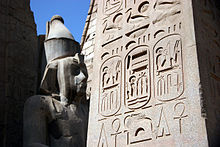
In
In
The earliest known Greek writings are
The
The beginning of
The
Theological works in Latin were the dominant form of
Controversial, religious, political and instructional literature proliferated during the European
Publishing

Publishing became possible with the invention of writing but became more practical with the invention of printing. Prior to printing, distributed works were copied manually, by scribes.
The Chinese inventor Bi Sheng made movable type of earthenware c. 1045 and was spread to Korea later. Around 1230, Koreans invented a metal type movable printing. East metal movable type was spread to Europe between the late 14th century and early 15th century.[73][74][75][76] In c. 1450, Johannes Gutenberg invented movable type in Europe. This invention gradually made books less expensive to produce and more widely available.
Early printed books, single sheets, and images created before 1501 in Europe are known as incunables or incunabula. "A man born in 1453, the year of the fall of Constantinople, could look back from his fiftieth year on a lifetime in which about eight million books had been printed, more perhaps than all the scribes of Europe had produced since Constantine founded his city in A.D. 330."[77]
Eventually, printing enabled other forms of publishing besides books. The history of newspaper publishing began in Germany in 1609, with the publishing of magazines following in 1663.
University discipline
In England
In late 1820s England, growing political and social awareness, "particularly among the
America
Women and literature
The widespread education of women was not common until the nineteenth century, and because of this, literature until recently was mostly male dominated.[79]
George Sand was an idea. She has a unique place in our age.
Others are great men ... she was a great woman.
Victor Hugo, Les funérailles de George Sand[80]
There were few English-language women poets whose names are remembered until the twentieth century. In the nineteenth century some notable individuals include Emily Brontë, Elizabeth Barrett Browning, and Emily Dickinson (see American poetry). But while generally women are absent from the European cannon of Romantic literature, there is one notable exception, the French novelist and memoirist Amantine Dupin (1804 – 1876) best known by her pen name George Sand.[81][82] One of the more popular writers in Europe in her lifetime,[83] being more renowned than both Victor Hugo and Honoré de Balzac in England in the 1830s and 1840s,[84] Sand is recognised as one of the most notable writers of the European Romantic era. Jane Austen (1775 – 1817) is the first major English woman novelist, while Aphra Behn is an early female dramatist.
Nobel Prizes in Literature have been awarded between 1901 and 2020 to 117 individuals: 101 men and 16 women. Selma Lagerlöf (1858 – 1940) was the first woman to win the Nobel Prize in Literature, which she was awarded in 1909. Additionally, she was the first woman to be granted a membership in The Swedish Academy in 1914.[85]
Feminist scholars have since the twentieth century sought to expand the literary canon to include more women writers.
Children's literature
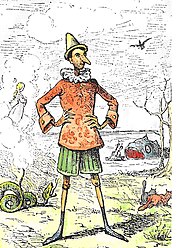
A separate genre of children's literature only began to emerge in the eighteenth century, with the development of the concept of
Aesthetics
Literary theory
A fundamental question of literary theory is "what is literature?" – although many contemporary theorists and literary scholars believe either that "literature" cannot be defined or that it can refer to any use of language.[89]
Literary fiction
Literary fiction is a term used to describe fiction that explores any facet of the human condition, and may involve social commentary. It is often regarded as having more artistic merit than genre fiction, especially the most commercially oriented types, but this has been contested in recent years, with the serious study of genre fiction within universities.[90]
The following, by the award-winning British author William Boyd on the short story, might be applied to all prose fiction:
[short stories] seem to answer something very deep in our nature as if, for the duration of its telling, something special has been created, some essence of our experience extrapolated, some temporary sense has been made of our common, turbulent journey towards the grave and oblivion.[91]
The very best in literature is annually recognized by the Nobel Prize in Literature, which is awarded to an author from any country who has, in the words of the will of Swedish industrialist Alfred Nobel, produced "in the field of literature the most outstanding work in an ideal direction" (original Swedish: den som inom litteraturen har producerat det mest framstående verket i en idealisk riktning).[92][93]
The value of imaginative literature
Some researchers suggest that literary fiction can play a role in an individual's psychological development.[94] Psychologists have also been using literature as a therapeutic tool.[95][96] Psychologist Hogan argues for the value of the time and emotion that a person devotes to understanding a character's situation in literature;[97] that it can unite a large community by provoking universal emotions, as well as allowing readers access to different cultures, and new emotional experiences.[98] One study, for example, suggested that the presence of familiar cultural values in literary texts played an important impact on the performance of minority students.[99]
Psychologist Maslow's ideas help literary critics understand how characters in literature reflect their personal culture and the history.[100] The theory suggests that literature helps an individual's struggle for self-fulfillment.[101][102]
The influence of religious texts
Religion has had a major influence on literature, through works like the Vedas, the Torah, the Bible,[103] and the Quran.[104][105][106]
The King James Version of the Bible has been called "the most influential version of the most influential book in the world, in what is now its most influential language", "the most important book in English religion and culture", and "arguably the most celebrated book in the English-speaking world"[107] - principally because of its literary style and widespread distribution. Prominent atheist figures such as the late Christopher Hitchens and Richard Dawkins have praised the King James Version as being "a giant step in the maturing of English literature" and "a great work of literature", respectively, with Dawkins adding, "A native speaker of English who has never read a word of the King James Bible is verging on the barbarian".[108][109]
Societies in which
Types
Poetry
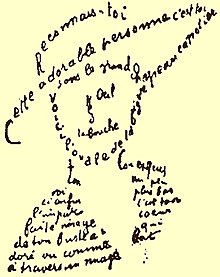
Poetry has traditionally been distinguished from
Prior to the 19th century, poetry was commonly understood to be something set in metrical lines: "any kind of subject consisting of Rhythm or Verses".[110] Possibly as a result of Aristotle's influence (his Poetics), "poetry" before the 19th century was usually less a technical designation for verse than a normative category of fictive or rhetorical art.[clarification needed][116] As a form it may pre-date literacy, with the earliest works being composed within and sustained by an oral tradition;[117][118] hence it constitutes the earliest example of literature.
Prose
As noted above, prose generally makes far less use of the aesthetic qualities of language than poetry.
On the historical development of prose, Richard Graff notes that "[In the case of ancient Greece] recent scholarship has emphasized the fact that formal prose was a comparatively late development, an "invention" properly associated with the classical period".[122]
Novel
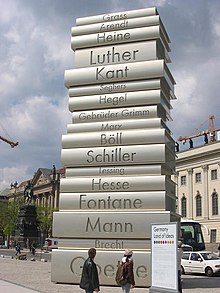
A novel is a long fictional narrative, usually written in prose. In English, the term emerged from the
Although there are many historical prototypes, so-called "novels before the novel",[128] the modern novel form emerges late in cultural history—roughly during the eighteenth century.[129] Initially subject to much criticism, the novel has acquired a dominant position amongst literary forms, both popularly and critically.[127][130][131]
Novella
The publisher Melville House classifies the novella as "too short to be a novel, too long to be a short story".[132] Publishers and literary award societies typically consider a novella to be between 17,000 and 40,000 words.[133]
Short story
A dilemma in defining the "short story" as a literary form is how to, or whether one should, distinguish it from any short narrative and its contested origin,[134] that include the Bible, and Edgar Allan Poe.[135]
Graphic novel
Graphic novels and comic books present stories told in a combination of artwork, dialogue, and text.
Electronic literature
Nonfiction
Common literary examples of non-fiction include, the essay; travel literature; biography, autobiography and memoir; journalism; letter; diary; history, philosophy, economics; scientific, nature, and technical writings.[7][136]
Nonfiction can fall within the broad category of literature as "any collection of written work", but some works fall within the narrower definition "by virtue of the excellence of their writing, their originality and their general aesthetic and artistic merits".[137]
Drama
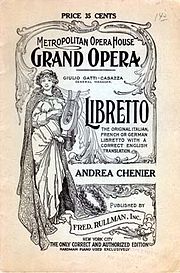
Drama is literature intended for performance.[138] The form is combined with music and dance in opera and musical theatre (see libretto). A play is a written dramatic work by a playwright that is intended for performance in a theatre; it comprises chiefly dialogue between characters. A closet drama, by contrast, is written to be read rather than to be performed; the meaning of which can be realized fully on the page.[139] Nearly all drama took verse form until comparatively recently.
The earliest form of which there exists substantial knowledge is
In the twentieth century, scripts written for non-stage media have been added to this form, including radio, television and film.
Law
Law and literature
The law and literature movement focuses on the interdisciplinary connection between law and literature.
Copyright
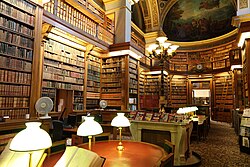
Copyright is a type of intellectual property that gives its owner the exclusive right to make copies of a creative work, usually for a limited time.[140][141][142][143][144] The creative work may be in a literary, artistic, educational, or musical form. Copyright is intended to protect the original expression of an idea in the form of a creative work, but not the idea itself.[145][146][147]
United Kingdom
Literary works have been protected by copyright law from unauthorized reproduction since at least 1710.[148] Literary works are defined by copyright law to mean "any work, other than a dramatic or musical work, which is written, spoken or sung, and accordingly includes (a) a table or compilation (other than a database), (b) a computer program, (c) preparatory design material for a computer program, and (d) a database."[149]
Literary works are all works of literature; that is all works expressed in print or writing (other than dramatic or musical works).[150]
United States
The copyright law of the United States has a long and complicated history, dating back to colonial times. It was established as federal law with the Copyright Act of 1790. This act was updated many times, including a major revision in 1976.
European Union
The
Copyright in communist countries
Copyright in Japan
Censorship
Censorship of literature is employed by states, religious organizations, educational institutions, etc., to control what can be portrayed, spoken, performed, or written.[152] Generally such bodies attempt to ban works for political reasons, or because they deal with other controversial matters such as race, or sex.[153]
A notable example of censorship is James Joyce's novel Ulysses, which has been described by Russian-American novelist Vladimir Nabokov as a "divine work of art" and the greatest masterpiece of 20th century prose.[154] It was banned in the United States from 1921 until 1933 on the grounds of obscenity. Nowadays it is a central literary text in English literature courses, throughout the world.[155]
Awards
There are numerous awards recognizing achievement and contribution in literature. Given the diversity of the field, awards are typically limited in scope, usually on: form, genre, language, nationality and output (e.g. for first-time writers or debut novels).[156]
The
See also
Notes
References
- ^ "Literature: definition". Oxford Learner's Dictionaries. Archived from the original on 10 June 2021. Retrieved 24 July 2020.
- ISBN 978-1-5095-1677-3.
- ^ Kaboré, André (January 2015). "Orature as a Characteristic of the Literatures of Werewere- Liking and Pacéré".
- ^ Goody 1987.
- ^ .
- ^ a b Rexroth, Kenneth. "literature | Definition, Characteristics, Genres, Types, & Facts". Encyclopedia Britannica. Archived from the original on 29 July 2020. Retrieved 27 July 2020.
- ^ a b OED[full citation needed]
- ^ "literature (n.)". Online Etymology Dictionary. Archived from the original on 22 February 2014. Retrieved 9 February 2014.
- ^ Meyer, Jim (1997). "What is Literature? A Definition Based on Prototypes". Work Papers of the Summer Institute of Linguistics and University of North Dakota Session. 41 (1). Retrieved 11 February 2014.[dead link]
- S2CID 190730645. (subscription required)
- ISBN 978-0440582731.
- ^ Leitch et al., The Norton Anthology of Theory and Criticism, 28
- ^ Eagleton 2008, p. 9.
- ISBN 978-81-269-0377-1. Archivedfrom the original on 14 April 2021.
- ^ a b Johnson, Sian (26 February 2020). "Study dates Victorian volcano that buried a human-made axe". ABC News. Archived from the original on 8 September 2020. Retrieved 9 March 2020.
- S2CID 214357121.
- ^ ISBN 978-9004112735.
- ISBN 978-1-4985-5183-0.
- (PDF) from the original on 1 January 2011. Retrieved 22 October 2020.
- ^ "Buddhism - The Pali canon (Tipitaka) | Britannica". www.britannica.com. Archived from the original on 17 March 2023. Retrieved 17 March 2023.
- ISBN 978-0-415-28128-7. Archivedfrom the original on 26 March 2023. Retrieved 17 March 2023.
- ^ Reece, Steve. "Orality and Literacy: Ancient Greek Literature as Oral Literature", in David Schenker and Martin Hose (eds.), Companion to Greek Literature (Oxford: Blackwell, 2015) 43-57. Ancient_Greek_Literature_as_Oral_Literature Archived 1 January 2020 at the Wayback Machine
- ISBN 978-9004112735.
- ISBN 978-9004112735.
- ISBN 978-3-515-08854-1. Archivedfrom the original on 20 August 2020. Retrieved 22 October 2020.
- ISBN 978-1-4051-1541-4.
- ISBN 978-1-4051-1541-4.
- ^ ISBN 978-1-4051-1541-4.
- ^ Doucleff, Michaeleen; Greenhalgh, Jane (13 March 2019). "How Inuit Parents Teach Kids To Control Their Anger". NPR. Archived from the original on 26 October 2020. Retrieved 29 April 2019.
- ISSN 2147-4478.
- ^ See, e.g., Thomas Conley, Rhetoric in the European Tradition (University of Chicago, 1991).
- .
- ^ Green, M.W. (1981). "The Construction and Implementation of the Cuneiform Writing System". Visible Language. 15 (4): 345–372.
- ^ Foster 2001, p. 19.
- ISBN 978-0-19-929633-0.
- ^ Foster 2001, p. 7.
- ISBN 0-520-02899-6.
- ^ Jacobs 1888, Introduction, page xv; Ryder 1925, Translator's introduction, quoting Hertel: "the original work was composed in Kashmir, about 200 B.C. At this date, however, many of the individual stories were already ancient."
- ^ Ryder 1925 Translator's introduction: "The Panchatantra is a niti-shastra, or textbook of niti. The word niti means roughly "the wise conduct of life." Western civilization must endure a certain shame in realizing that no precise equivalent of the term is found in English, French, Latin, or Greek. Many words are therefore necessary to explain what niti is, though the idea, once grasped, is clear, important, and satisfying."
- ^ Baxter (1992), p. 356.
- ^ Allan (1991), p. 39.
- ^ Zheng Xuan 鄭玄 (AD 127–200), Shipu xu 詩譜序.
- ISBN 0-691-00326-2
- ^ "Chinese philosophy" Archived 2 May 2015 at the Wayback Machine, Encyclopædia Britannica, online
- from the original on 21 April 2021. Retrieved 21 October 2020.
- ^ see e.g. Radhakrishnan & Moore 1957, p. 3; Witzel, Michael, "Vedas and Upaniṣads", in: Flood 2003, p. 68; MacDonell 2004, pp. 29–39; Sanskrit literature (2003) in Philip's Encyclopedia. Accessed 2007-08-09
- ^ Sanujit Ghose (2011). "Religious Developments in Ancient India Archived 30 July 2022 at the Wayback Machine" in Ancient History Encyclopedia.
- ^ Gavin Flood sums up mainstream estimates, according to which the Rigveda was compiled from as early as 1500 BC over a period of several centuries. Flood 1996, p. 37
- ISBN 978-0-8239-3179-8. Archivedfrom the original on 19 October 2020. Retrieved 21 October 2020.
- ISBN 978-81-260-0794-3. Archivedfrom the original on 19 October 2020. Retrieved 21 October 2020.
- ^ "Ramayana | Summary, Characters, & Facts". Encyclopedia Britannica. Archived from the original on 12 April 2020. Retrieved 18 February 2020.
- ^ Lutgendorf, Philip (1991). The Life of a Text. University of California Press. p. 1.
- ISBN 978-1-107-69176-6. "The glimpse we have suddenly been given of the account books of a long-forgotten people..."
- ^ ISBN 978-1-107-50341-0. Archivedfrom the original on 14 April 2021. Retrieved 15 November 2020.
- ISBN 978-1136736629. Archivedfrom the original on 10 August 2017. Retrieved 23 November 2016.
- ISBN 978-1136788000. Archivedfrom the original on 10 August 2017. Retrieved 22 November 2016.
- ISBN 978-0226143125. Archivedfrom the original on 10 August 2017. Retrieved 22 November 2016.
- ISBN 978-0521809665. Archivedfrom the original on 10 August 2017. Retrieved 22 November 2016.
- ISBN 978-0801483356. Archivedfrom the original on 10 August 2017. Retrieved 23 November 2016.
- ISBN 978-0472083534. Archivedfrom the original on 10 August 2017. Retrieved 22 November 2016.
- ISBN 978-0199577804. Archivedfrom the original on 5 August 2020. Retrieved 22 November 2016.
- ISBN 978-0195358629. Archivedfrom the original on 30 June 2017. Retrieved 22 November 2016.
- ^ Aristophanes: Butts K.J.Dover (ed), Oxford University Press 1970, Intro. p. x.
- ^ Frei 2001, p. 6.
- ^ Romer 2008, p. 2 and fn.3.
- ISBN 978-0-19-285343-1.
- ^ Duckworth, George Eckel. The nature of Roman comedy: a study in popular entertainment. Archived 4 August 2020 at the Wayback Machine University of Oklahoma Press, 1994. p. 3. Web. 15 October 2011.
- ISBN 978-0-674-05097-6.
- ^ "الوثائقية تفتح ملف "اللغة العربية"". الجزيرة الوثائقية (in Arabic). 8 September 2019. Archived from the original on 16 June 2022. Retrieved 18 June 2020.
- ^ "Western literature - Medieval literature". Encyclopedia Britannica. Archived from the original on 29 April 2015. Retrieved 21 October 2020.
- ^ Elizabeth L. Eisenstein, The Printing Press as an Agent of Change. Cambridge University Press, 1980
- ^ Margaret Anne Doody, The True Story of the Novel. New Brunswick, NJ: Rutgers University Press, 1996, rept. 1997, p. 1. Retrieved 21 October 2020.
- ^ Polenz, Peter von. (1991). Deutsche Sprachgeschichte vom Spätmittelalter bis zur Gegenwart: I. Einführung, Grundbegriffe, Deutsch in der frühbürgerlichen Zeit (in German). New York/Berlin: Gruyter, Walter de GmbH.
- ^ Thomas Christensen (2007). "Did East Asian Printing Traditions Influence the European Renaissance?". Arts of Asia Magazine (to appear). Retrieved 18 October 2006.
- Thomas Franklin Carter, The Invention of Printing in China and its Spread Westward, The Ronald Press, NY 2nd ed. 1955, pp. 176–178
- ISBN 978-0-13-923897-0.
- Elizabeth L. Eisenstein, The Printing Press as an Agent of Change (Cambridge University, 1980).
- ^ "Court: Institutionalizing English Literature". oldsite.english.ucsb.edu. Archived from the original on 21 October 2020. Retrieved 20 October 2020.
- ^ "Women and Literature". www.ibiblio.org. Archived from the original on 24 October 2020. Retrieved 23 October 2020.
- ^ Saturday Review. Saturday Review. 1876. pp. 771ff. Archived from the original on 1 August 2020. Retrieved 25 October 2020.
- ^ Hart, Kathleen (2004). Revolution and Women's Autobiography in Nineteenth-century France. Rodopi. p. 91.
- ^ Lewis, Linda M. (2003). Germaine de Staël, George Sand, and the Victorian Woman Artist. University of Missouri Press. p. 48.
- ^ Eisler, Benita (8 June 2018). "'George Sand' Review: Monstre Sacré". WSJ. Archived from the original on 23 September 2019. Retrieved 6 November 2018.
- JSTOR 3726119.
- ISBN 0485910039.
- ^ ...remains the most translated Italian book and, after the Bible, the most widely read... by Francelia Butler, Children's Literature, Yale University Press, 1972.
- ISBN 978-0-313-29614-7. Archivedfrom the original on 27 July 2020. Retrieved 25 October 2020.
- ^ Lyons, Martyn. 2011. Books: a living history. Los Angeles: J. Paul Getty Museum.
- JSTOR 40012241.
- ^ Matthew Schneider-Mayerson, "Popular Fiction Studies: The Advantages of a New Field". Studies in Popular Culture, Vol. 33, No. 1 (Fall 2010), pp. 21-3
- ^ Boyd, William. "A short history of the short story". Archived from the original on 21 June 2018. Retrieved 17 April 2018.
- ^ "The Nobel Prize in Literature". nobelprize.org. Archived from the original on 13 July 2019.
- ^ John Sutherland (13 October 2007). "Ink and Spit". Guardian Unlimited Books. The Guardian. Archived from the original on 11 November 2007. Retrieved 13 October 2007.
- ISBN 9783640187799. Archivedfrom the original on 14 April 2021. Retrieved 15 November 2020.
- ISBN 978-1349198511.
- ISBN 0304700924.
- ^ Hogan 2011, p. 10.
- ^ Hogan 2011, p. 11.
- ISBN 0471272876.
- ^ Paris 1986, p. 61.
- ^ Paris 1986, p. 25.
- ^ Nezami, S.R.A. (February 2012). "The use of figures of speech as a literary device—a specific mode of expression in English literature". Language in India. 12 (2): 659–.[dead link]
- ISBN 978-0198863335. Archivedfrom the original on 23 February 2022. Retrieved 23 February 2022.
In its various translations, [the Bible] has had a formative influence on the language, the literature, the art, the music of all the major European and North American cultures. It continues to influence popular culture in films, novels, and music.
- ^ "Islamic arts - Islamic literatures". Encyclopedia Britannica. Archived from the original on 22 June 2021. Retrieved 12 November 2020.
- ISBN 978-0-19-285343-1.
- ^ "Hinduism - Vernacular literatures". Encyclopedia Britannica. Archived from the original on 11 March 2022. Retrieved 12 November 2020.
- ^ "The King James Translation of the New Testament | Religious Studies Center".
- ^ "When the King Saved God". Vanity Fair. 2011. Archived from the original on 24 December 2020. Retrieved 10 August 2017.
- ^ "Why I want all our children to read the King James Bible". The Guardian. 20 May 2012. Archived from the original on 29 November 2020. Retrieved 10 August 2017.
- ^ a b "poetry, n." Oxford English Dictionary. OUP. Archived from the original on 30 June 2020. Retrieved 13 February 2014.(subscription required)
- ^ a b Preminger 1993, p. 938.
- ^ a b Preminger 1993, p. 939.
- ^ Preminger 1993, p. 981.
- ^ Preminger 1993, p. 979.
- JSTOR 27530906. (subscription required)
- (PDF) from the original on 21 February 2014. Retrieved 9 February 2014.
- ^ Finnegan, Ruth H. (1977). Oral poetry: its nature, significance, and social context. Indiana University Press. p. 66.
- S2CID 162903356. (subscription required)
- ^ Alison Booth; Kelly J. Mays. "Glossary: P". LitWeb, the Norton Introduction to Literature Studyspace. Archived from the original on 18 March 2011. Retrieved 15 February 2014.
- ^ Eliot T.S. 'Poetry & Prose: The Chapbook. Poetry Bookshop: London, 1921.
- ^ For discussion of the basic categorical issues see (Preminger 1993, "Narrative Poetry").
- S2CID 144730853. (subscription required)
- ^ "Literature", Encyclopaedia Britannica. online
- ^ Sommerville, C. J. (1996). The News Revolution in England: Cultural Dynamics of Daily Information. Oxford: OUP. p. 18.
- Harlequin Romance.
- ^ Doody (1996), p. 15.
- ^ a b "The Novel". A Guide to the Study of Literature: A Companion Text for Core Studies 6, Landmarks of Literature. Brooklyn College. Archived from the original on 22 February 2014. Retrieved 22 February 2014.
- ^ Goody 2006, p. 19.
- ^ Goody 2006, p. 20.
- ^ Goody 2006, p. 29.
- ISBN 978-0-691-04948-9.
- ^ Antrim, Taylor (2010). "In Praise of Short". The Daily Beast. Archived from the original on 18 February 2014. Retrieved 15 February 2014.
- Science Fiction and Fantasy Writers of America. Archived from the originalon 19 March 2009.
- ^ Boyd, William. "A short history of the short story". Prospect Magazine. Archived from the original on 3 July 2014. Retrieved 8 March 2014.
- ^ Colibaba, Ştefan (2010). "The Nature of the Short Story: Attempts at Definition" (PDF). Synergy. 6 (2): 220–230. Archived (PDF) from the original on 21 March 2014. Retrieved 6 March 2014.
- ISBN 978-0872074965. Archivedfrom the original on 14 April 2021. Retrieved 18 October 2020.
- ^ Cuddon 1998, p. 472.
- ISBN 978-0-416-72060-0.
- ^ Cody, Gabrielle H. (2007). The Columbia Encyclopedia of Modern Drama (Volume 1 ed.). New York City: Columbia University Press. p. 271.
- Oxford Dictionaries. Archived from the originalon 21 December 2018. Retrieved 20 December 2018.
- ^ "Definition of Copyright". Merriam-Webster. Archived from the original on 21 December 2018. Retrieved 20 December 2018.
- ^ Nimmer on Copyright, vol. 2, § 8.01.
- ^ "Intellectual property", Black's Law Dictionary, 10th ed. (2014).
- ^ "Understanding Copyright and Related Rights" (PDF). www.wipo.int. p. 4. Archived (PDF) from the original on 27 December 2019. Retrieved 6 December 2018.
- ^ Stim, Rich (27 March 2013). "Copyright Basics FAQ". The Center for Internet and Society Fair Use Project. Stanford University. Archived from the original on 11 June 2018. Retrieved 21 July 2019.
- ^ Daniel A. Tysver. "Works Unprotected by Copyright Law". Bitlaw. Archived from the original on 2 March 2016. Retrieved 25 October 2020.
- ^ Lee A. Hollaar. "Legal Protection of Digital Information". p. Chapter 1: An Overview of Copyright, Section II.E. Ideas Versus Expression. Archived from the original on 28 October 2020. Retrieved 25 October 2020.
- ^ The Statute of Anne 1710 and the Literary Copyright Act 1842 used the term "book". However, since 1911 the statutes have referred to literary works.
- ^ "Copyright, Designs and Patents Act 1988". legislation.gov.uk. Archived from the original on 29 October 2021. Retrieved 11 October 2021.
- ^ "University of London Press v. University Tutorial Press" [1916][full citation needed]
- ^ Agency for Cultural Affairs. 環太平洋パートナーシップ協定の法律) (PDF) (in Japanese). Agency for Cultural Affairs. Archived (PDF) from the original on 19 January 2021. Retrieved 4 January 2019.
- ^ Cuddon 1998, pp. 118–122, "Censorship".
- ^ "About Banned & Challenged Books". ala.org. 25 October 2016. Archived from the original on 8 April 2014. Retrieved 28 October 2020.
- ^ Nabokov, pp. 55, 57[full citation needed]
- ^ Ulysses has been called "the most prominent landmark in modernist literature", a work where life's complexities are depicted with "unprecedented, and unequalled, linguistic and stylistic virtuosity". The New York Times guide to essential knowledge, 3d ed. (2011), p. 126.
- ^ John Stock; Kealey Rigden (15 October 2013). "Man Booker 2013: Top 25 literary prizes". The Telegraph. Archived from the original on 15 October 2013. Retrieved 8 March 2014.
- ^ "Facts on the Nobel Prize in Literature". Nobelprize.org. Nobel Media AB. Archived from the original on 8 March 2014. Retrieved 8 March 2014.
Bibliography
- Allan, Sarah (1991). The Shape of the Turtle: Myth, Art, and Cosmos in Early China. SUNY Press. ISBN 978-0-7914-0460-7.)
{{citation}}: CS1 maint: postscript (link - ISBN 978-3-11-012324-1.)
{{citation}}: CS1 maint: postscript (link - ISBN 0-631-20271-4.
- Eagleton, Terry (2008). ISBN 978-1-4051-7921-8.
- ISBN 978-0-521-43878-0.
- Flood, Gavin, ed. (2003). The Blackwell companion to Hinduism. Oxford: Blackwell Publ. ISBN 1-4051-3251-5.
- Hogan, P. Colm (2011). What Literature Teaches Us about Emotion. New York: Cambridge University Press.
- Foster, John Lawrence (2001). Ancient Egyptian Literature: An Anthology. Austin: University of Texas Press. p. xx. ISBN 978-0-292-72527-0.
- Frei, Peter (2001). "Persian Imperial Authorization: A Summary". In Watts, James (ed.). Persia and Torah: The Theory of Imperial Authorization of the Pentateuch. Atlanta, GA: SBL Press. p. 6. ISBN 9781589830158.
- ISBN 978-0-521-33794-6.
- Goody, Jack (2006). "From Oral to Written: An Anthropological Breakthrough in Storytelling". In Franco Moretti (ed.). The Novel, Volume 1: History, Geography, and Culture. Princeton: Princeton UP. p. 18. ISBN 978-0-691-04947-2.
- Jacobs, Joseph (1888). The earliest English version of the Fables of Bidpai.
- MacDonell, Arthur Anthony (2004). A Practical Sanskrit Dictionary. Motilal Banarsidass. ISBN 978-81-208-2000-5.
- Paris, B.J. (1986). Third Force Psychology and the Study of Literature. Cranbury: Associated University Press.
- Preminger, Alex; et al. (1993). The New Princeton Encyclopedia of Poetry and Poetics. US: Princeton University Press. ISBN 978-0-691-02123-2.
- ISBN 978-0-691-01958-1.
- Romer, Thomas (2008). "Moses Outside the Torah and the Construction of a Diaspora Identity" (PDF). Journal of Hebrew Scriptures. 8, article 15: 2–12. Archived from the original (PDF) on 21 October 2020. Retrieved 27 September 2019.
- ISBN 81-7224-080-5.
Further reading
- Encyclopedias
- ISBN 978-0191783234.
- ISBN 978-0-691-15491-6.
- Merriam Webster's Encyclopedia of Literature. Springfield, Ma: Merriam-Webster. 1995. ISBN 0-87779-042-6.
- Other
- Bonheim, Helmut (1982). The Narrative Modes: Techniques of the Short Story. Cambridge: Brewer. An overview of several hundred short stories.
- Gillespie, Gerald (January 1967). "Novella, nouvelle, novella, short novel? — A review of terms". Neophilologus. 51 (1): 117–127. S2CID 162102536.
- MAZZEO, T. J. (2012). Some Caveats about Postulating a Regency Literature. Keats-Shelley Journal, 61, 57–64. http://www.jstor.org/stable/24396035
- Wheeler, L. Kip. "Periods of Literary History" (PDF). Carson-Newman University. Archived(PDF) from the original on 1 March 2008. Retrieved 18 March 2014. Brief summary of major periods in literary history of the Western tradition.
External links
- Project Gutenberg Online Library
- Internet Book List similar to IMDbbut for books (archived 7 February 2007)
- Digital eBook Collection – Internet Archive
